Jan 09, 2019
Eye Health Needs: Preserving the Eyesight of Rural Populations
Related Articles
Teleophthalmology:
Ophthalmologists Talk Remote Eye Care Solutions
Looking at
Vision-related Data: Research Gaps and Eye Care
Guidelines
Rural Eye Healthcare:
Optometrist Explains the Benefits of the Medical Model of
Optometry
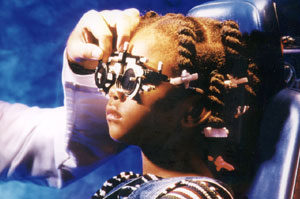
"They said the child started to cry," Craig Kennedy, executive director of the Association of Clinicians for the Underserved (ACU) said, sharing the story about the impact of his organization's Vision Van visit to a school in an underserved area of rural Georgia.
"A little girl received her first pair of glasses," Kennedy said. "When she put them on for the first time, she started crying. Seeing those tears, those watching had a bit of a panic, fearing that the prescription must be wrong, making her vision worse – or maybe, she hated the glasses. Turned out, she was crying because, for the first time in her life, she could see the indentations between the cinder blocks of the gray cement wall of her school building."
"When a child cries because, for the first time, she's able to see something as ordinary as indentations in a cement wall?" Kennedy commented. "Well, you can only imagine how you've changed that child's life because of her new ability to see things in the world around her, her classroom, or now to even be able to see in order to learn to read."
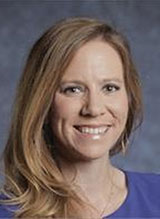
Sara Brown also hears personal stories. Brown, Director of Government Affairs for Prevent Blindness, has occasion to listen to young adults from all over the country sharing the exact moment of being able to really see for the first time. For many, that "first sight" experience didn't come until they were college students. Yet Brown said an equal number of the personal stories she hears are about senior family members whose age-related vision issues are increasing their families' caregiving responsibilities.
"I hear such similar stories, and I hear them over and over," Brown said. "This might sound like two populations with two very different needs, but actually these are two different problems with a common solution: get vision care to all ages to lessen the occurrence of preventable vision loss. We have to work together so vision is just a seamless part of healthy living and routine healthcare."
Across the Age Continuum, Eye Health Concerns Loom Large
Prevent Blindness has state-level data [no longer available online] available that include selected vision problems that can be filtered by age. Kira Baldonado, the organization's Vice President for Public Health and Policy, said this information is especially important when looking into eye health of rural populations.
Experts said vision care is a frequently overlooked component of healthcare for children. According to the American Optometric Association, babies aren't born with normal vision. The ability to see is actually learned by the eyes and brain working together, and "babies learn to see over a period of time, much like they learn to walk and talk." The organization's information section pointed out that babies' eyes send information to their brains in the form of light patterns. With time, the brain learns to understand those light patterns and "sees" these patterns as images. If there is a problem with the eye's ability to transmit light patterns, the brain can't learn how to see clearly.
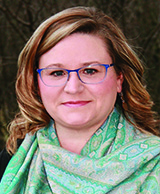
Knowing the importance of early identification of vision issues to ensure proper development and learning readiness, Baldonado said their organization, Prevent Blindness, pays special attention to childhood vision problems.
"We have concerns about young children since we've already had warning from Asian countries that they're seeing a dramatic increase in myopia [nearsightedness]," she said. "Ninety to ninety-five percent of those populations now have myopia and recent studies indicate that there is potential for this to become a huge problem for our preschoolers who are getting less outdoor time and more screen time. That outdoor time can be critical for eye development of young children and possible prevention of myopia."
Baldonado emphasized the importance of vision health as a concern across the age continuum. Other experts pointed out that the leading cause of blindness and serious vision loss in adults age 20 to 70 is diabetic retinopathy. Above that age range, another eye disease commonly causes vision loss: age-related macular degeneration.
"In our aging population, there emerges a whole different spectrum of problems," Baldonado said. "One of the fastest-growing issues is age-related macular degeneration, with its loss of central vision. That vision loss makes it hard to do anything where you need straight-ahead vision like driving, reading, watching TV, and much more. We have lots of individuals losing their independence because of that problem. At a very large cost, these people are forced into skilled nursing care because they can't see to take care of themselves."
In addition to diabetic retinopathy and age-related macular degeneration, experts noted that glaucoma is also a concern in aging populations. Experts explained that with glaucoma — often called the "thief of sight" — eye changes often happen long before someone loses their sight. When vision is actually lost, it may be too late to regain lost sight. Attention then has to turn to slowing the progression of the disease. Baldonado pointed out glaucoma prevalence in other populations.
It happens slowly; there's no pain. Then you add the confounding factors of geography and access to care; there's even more risk for vision loss.
"We know that [certain groups] are at high risk for glaucoma, a disease that impacts peripheral vision," she said. "It happens slowly; there's no pain. Then you add the confounding factors of geography and access to care; there's even more risk for vision loss. We are working to raise awareness and improve access to eye care to ensure early detection and treatment of these problems."
Economics and Vision: Costs Associated with Low Vision and Blindness
In 2013, researchers reported on 2012 cost estimates that indicated eye- and vision-related conditions might be the fifth most costly healthcare expenditure category. These costs, which included quality of life measures, estimated that $10 billion were spent for children younger than 18 years with vision loss and eye problems — an estimate that included medical care costs, vision aids and devices, caregivers, special education, vision screening programs, and federal assistance programs. Though there was no specific nonmetro data analysis, the report also noted that "patients and their families carried 70% of the total economic burden of eye disorders and vision loss," a statistic that vision care champions said is important when considering the socioeconomic status of many families in rural America.
Additionally, state and local government spending was noted at $0.7 billion for special education and school screening. Costs for adults aged 18 to 39 were found to be $28 billion. Researchers translated costs from an earlier 2004 study evaluating costs for 4 eye disorders in the 40 and older age group that came to nearly $67 billion in 2012 dollars.
Another Cost Consideration: Linking Vision Impairment with Costs for Seniors Who Fall
In a November 2018 paper in the Journal of the American Geriatric Society (JAGS), Michigan and Indiana researchers offer what they believe is "the first study to provide nationally representative data on the prevalence of fall-related outcomes in older Americans with self-reported VI [vision impairment]."
Why is vision-related fall information important? First, because falls in the rural population are the third leading cause of fatal unintentional injuries. Second — especially true for fall survivors — experts said that many seniors will have significant functional limitations requiring skilled nursing care for the remainder of their days. Third, medical costs associated with falls are significant. An April 2018 JAGS study stated that "estimated costs of fatal and nonfatal falls combined totaled approximately $50 billion. Almost 99% of this cost was attributable to healthcare for nonfatal falls."
The November study used 2011-2016 survey data from the National Health and Aging Trends Study, with over 36,000 participant observations analyzed. Self-reported VI was assessed using questions asking if the respondent had difficulty recognizing someone across the street or reading newspaper print, even when using corrective lenses. Looking at the categories' unadjusted prevalence for actual falls, fear of falling (FOF), and activity limitations due to FOF, the study analyzed nearly 4,000 respondents reporting VI and found that almost 30% had more than 1 fall in the previous year, compared to only 13% of those participants not claiming any VI. Additionally, of those with VI, nearly 50% had FOF, and 50% did admit that FOF limited their activity. These results led the researchers to suggest that addressing vision impairment might serve as an important public health intervention in order to impact fall-related morbidity and mortality.
Who Provides Rural Eye Care?
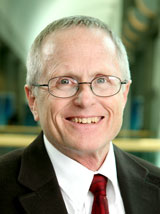
From birth to advancing age, providers say that attending to eye health happens by following a division of labor among healthcare professionals. Primary care providers and public health workers are the first line of either routine screening, or routine questions regarding eye health or basic examination and treatment. These providers said it's also important to understand that there is a clinical care gap between where their skill set ends and when the patient's eye problem must be handed off to an optometrist or an ophthalmologist, providers who specialize in eye care. Dr. Mark Horton, whose career began as a naval optometrist-turned-ophthalmologist and who is now recently retired from his career with the Indian Health Service (IHS), further explained the transition of care.
"Primary care providers take care of kidney problems, blood pressure issues, and other similar problems in real time," Horton said. "If the creatinine is abnormal, the blood pressure too high or too low, the primary care provider checks labs, provides a general examination, and gives a medicine or other treatment. But, for most eye issues, there's little a primary care doctor can usually do other than to refer their patient to an eye care provider, which involves a patient having to go somewhere else. That 'somewhere else' is not such a problem in urban areas but, in rural areas, it's a whole different issue."
An FQHC Administrator Talks about Rural Vision Care
George Barton is chief executive officer of several Federally Qualified Health Centers (FQHCs) in Pennsylvania, including one in Hyndman. Shortly after arriving in the area three years ago, Barton began to think about how the clinics could expand patient services to include eye care. He said there were several considerations.
Due to previous experience, he knew how tough expanding healthcare services in rural areas would be. Barton shared that "rural health often doesn't get the same financial respect or investment, which often means the most obvious care — like vision care — will get overlooked for rural residents." He also talked about other rural barriers to vision care.
In my opinion, trying to figure out how to provide vision care then becomes a moral obligation.
"First, you have to realize that many of your patients have no gauge for how poor their vision is," Barton said, echoing what Prevent Blindness's Sara Brown shared about "first sight" experiences for patients who don't realize how well they should see until they've gotten glasses. "Then you have to realize that even if a patient has an identified vision need, poverty and transportation issues will limit their ability to do something about it. Patients often can't pay for the service, or can't find anyone to take them to an appointment 40 miles away. These are real issues in our rural areas that just end up making eye care a really low priority when it shouldn't be. Also, as an administrator, you have a clear understanding that if you can provide vision care services, that service can enhance all of your clinical outcomes. In my opinion, trying to figure out how to provide vision care then becomes a moral obligation."
How One Thing Leads to Another: Collaboration Brings Permanent Eye Care Services
The ACU's Vision Van, funded in part by the Centene Foundation for Quality Healthcare, started bringing free services to both urban and rural communities in 2017. According to Kennedy, most recent 2018 data showed the van has provided care to over 1,600 participants, 42% residing outside a metropolitan statistical area. The van's visits are coordinated through local healthcare organizations. If glasses are needed, patients can see the optometrist in the van and no-cost glasses can be ordered. Kennedy had heard the van's visit to Hyndman in 2017 was a "tremendous success." So Kennedy reached out to Hyndman's CEO Barton to provide a reminder that the application period for the following year's van visit was open.
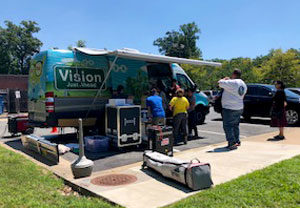
"I called George to make sure he knew about the needs assessment since we hadn't received a request for a repeat visit," Kennedy shared. "I said, 'George, I thought you had a great visit last year. I'm wondering why we haven't heard from you about applying for another visit?' George told me that yes, they'd had a great visit. But it was such a great visit, it just further inspired him and his team to find a way to bring permanent vision services to their community members."
Barton, the FQHC CEO, told the rest of the story.
"When the Vision Van came, we had nearly 100 patients show up," Barton said. "For reference, Hyndman is only about 850 people. The next day, 70 people showed up when the van went to our satellite in Bedford. We were so glad those people came because 50% of them needed glasses."
Barton admitted that though he was expecting a lot of participation, the show rate was overwhelming — especially when they discovered the number of participants who needed vision correction, in addition to those identified with even more serious eye problems.
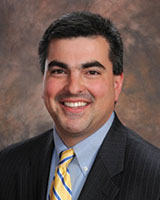
"I know Craig was shocked when I said we weren't going to apply for another Vision Van visit," Barton said. "Who turns down the opportunity to accept a free service? But I told him we became convinced that our patients needed this eye care service permanently. Our 4 rural schools needed it, our seniors needed it, and we even recognized we should work with the manufacturing employers in our county to offer eye care services that their employees need. Good vision is a must for welders, drivers, and for sustained earning potential in this area — not to mention the confidence brought to our community members when they can see for the first time. We had to find a way to do it."
Barton outlined the FQHC's start-up process to bring vision care to their FQHCs. After the Van's visit in Summer 2017, clinic space was reorganized to accommodate an optometry exam room. The ACU provided some grant funding as seed money. The Vision Van personnel helped decision-making around basic equipment purchases. Barton's team connected with several optometrists who were happy for the opportunity to do some community work. Eye care services are planned to start later this month, a delay from an earlier anticipated opening because Barton said it took some extra time to get things "just right. Because if we are going to provide a new service, we are going to provide a high-quality new service."
Prevent Blindness's Baldonado shared her perspective about vision vans and clinics who might add permanent eye care services.
"When you see photos of that long, long line of people waiting for their turn in a vision van, you may automatically think 'third-world country,' but that's what it looks like here in the United States," Baldonado said. "That shows us where the status of vision care is in this country, especially in rural America. Thinking of vision first can have a positive impact on many health areas. But what we know is that health centers who have spent the $100,000 or so to set up vision care have found those services self-sustaining in a very short period of time. The costs are recovered in about a year and a half and it's important to recognize it's a service that has an almost immediate short-term return on investment because it meets the needs of all age groups."

